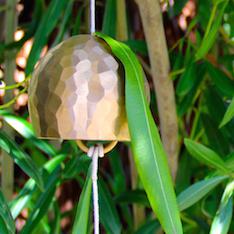
Bronze Cast Fuurin [WINTER 2013]
Fuurin Bell Design and Manufacturing Project
Design & Manufacturing Process
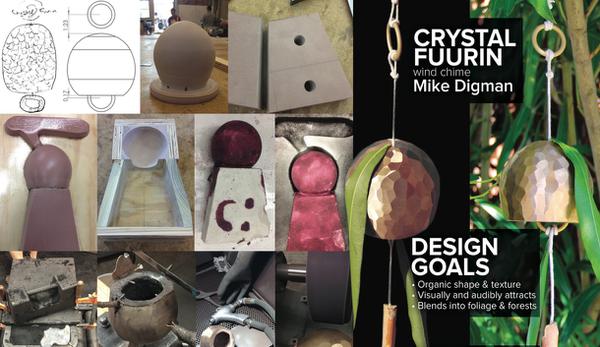
Fuurin - In The Trees
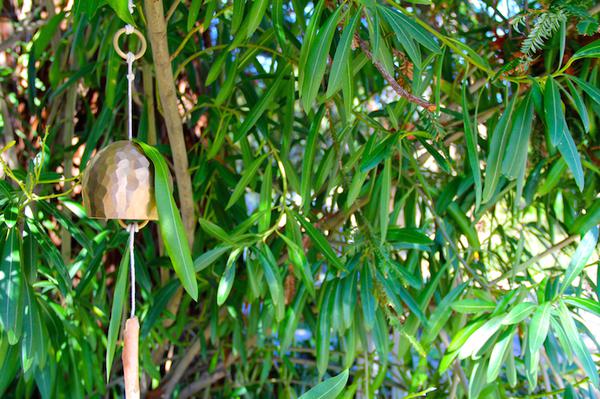
Fuurin - Full Length
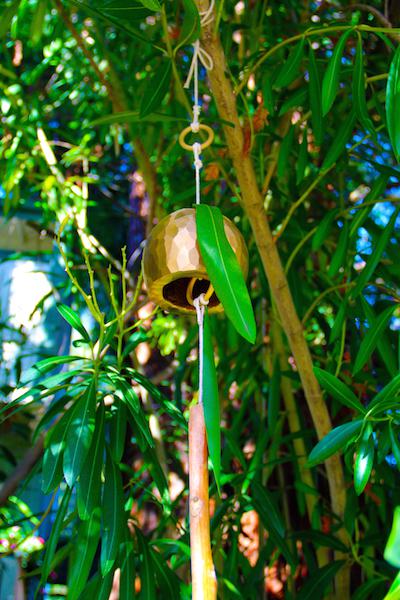
Fuurin - Above
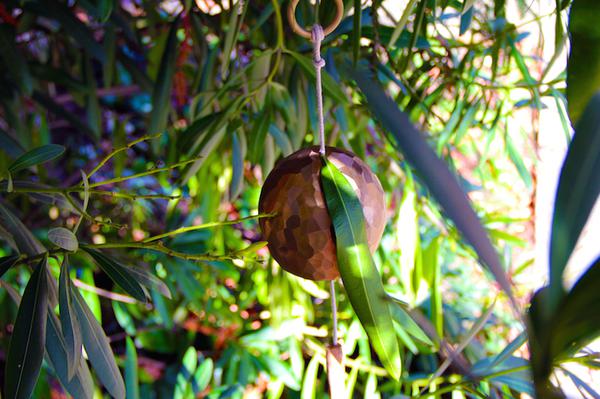
Overview
A fuurin (風鈴) is a wind chime found thoughout Japan in the summertime. In this project I designed, machined, cast and post-processed a fuurin with a unique body, zetsu and organic texture dubbed Crystal Fuurin. This work spans ideation to design to manufacturing to glamor shots.
Fuurin Primer
A fuurin is a popular wind chime typically made of glass, iron, or bronze. The body of a fuurin is often, but not always, bell shaped. Fuurins can also be spherical or conical, to name a few varieties. A fuurin has a zetsu, or tongue, that sways in the wind and collides with the body of the fuurin to make a pleasing sound. Below the zetsu hangs the tanzaku, or tail, often made of tenugui, or terrycloth. Fuurin are normally small enough to be held in the palm of a hand.
Unlike many traditional bells, a fuurin does not have a traditional rigid clapper. Instead, a fuurin’s zetsu is suspended by a string attached to the bell’s inside roof at a length such that it strikes the very bottom lip of the fuurin under wind power. The zetsu should not strike the body with every gust of wind, so its width should be small enough that only large gusts will cause the fuurin to chime. The zetsu is also responsible for suspending the tenugui by string using an adjustable stop knot, another factor driving the zetsu’s mechanical form.
Project Goals
- Make a fuurin that blends into foliage and forests
- Wanted the bell to patina with age
- Wanted an organic shape and texture
- Wanted a unique visual aesthetic with a clean, audible chime
Design and Manufacturing Methods
- Prototyped several iterations of the bell to get the ideal shape and texture before casting
- Bronze sand casting was chosen as the final production method
- This method utilized a pattern board (to shape both sides of the casting sand box) and a core (an insert to keep the inside of the bell hollow, destroyed after casting)
- A core box was used to systematically create the core inserts such that the base fit into the cavity of sand created by the pattern board
- The bell’s external and internal wall shapes (for the pattern board and core box, respectively) were turned and sanded on a wood lathe out of modulin foam
- A large, planed wooden board was made into the pattern board, sanded and coated with shellac and buffed for smoothness (for easy removal from the sand box)
- On the pattern board was placed the core base/print, the bell external wall and gates and runners with appropriate draft, all made from modulin foam
- The core box was created from wood using the core print and the bell internal wall as masks
- To cast, a core was made from the core box and placed into the cavity formed using the pattern board in the two halves of the sand casting box
- Several iterations of casting later, a suitable bell base was cast
- The entire bell was sand blasted and smoothed using a dremel
- Long passes through the belt sander, at random angles along the contour of the bell, were used to form the organic external texture
- The zetsu / tongue of the fuurin was created from a bronze ring that was reformed under heat and sandblasted
- Traditional fuurin rope tying techniques were used to join the bell, zetsu and tanzaku